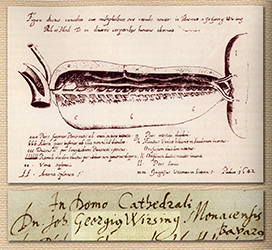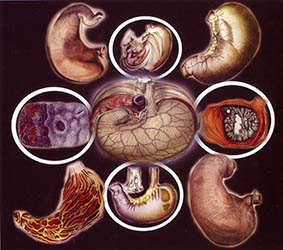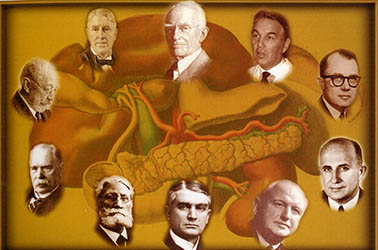| Wirsüng's plate of pancreatic duct discovery. It is evident from this reproduction that Wirsüng was an expert copperplate engraver. He printed his engraving of the pancreas onto a small, oblong folio that clearly indicated the pancreas, both the bile and pancreatic ducts as well as part of the duodenum and spleen. The twenty-one branches of the pancreatic duct can also be clearly identified. This copperplate is still on display in the Palazzo del Bo at the University of Padua. |
An 1832 illustration of the stomach, esophagus and duodenum by Jean-Marc bourgery (1797-1849) of Paris. It was the anatomic, pathologic and chemical investigations of the stomach that provided the initial impetus that led to subsequent delineation and elucidation of the seminal role that the pancreas played in digestion. |
Modern Pancreatic Surgery to a large extent evolved from the work of Allen Whipple (top center), who successfully performed major resections. Important contributors, surgeons and scientists were Moynihan, Mazo Roson, Trendenlenburg, Courvoisier, William Mayo, Roscoe Graham, Zollinger (description of Zollinger-Ellison Syndrome), Joseph Fortner (introduction of regional pancreatectomy) and Hans Beger. |


